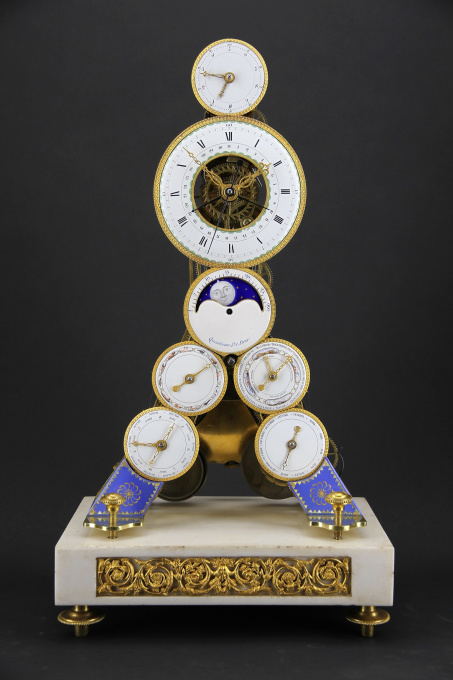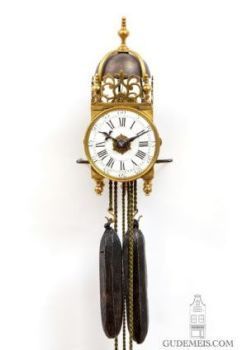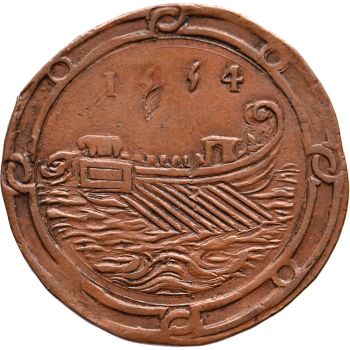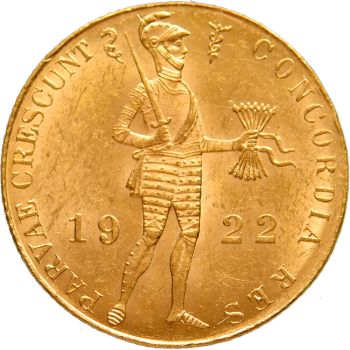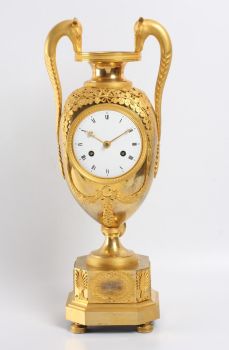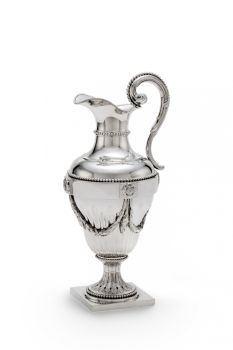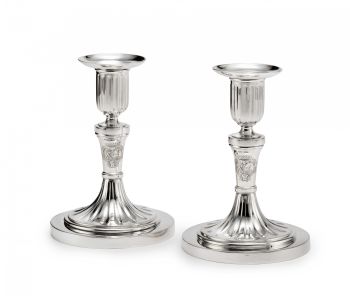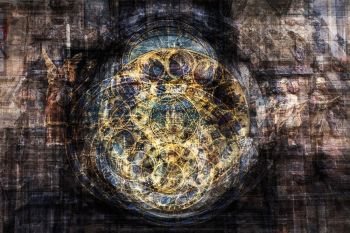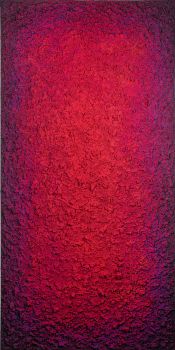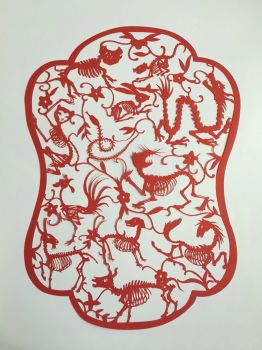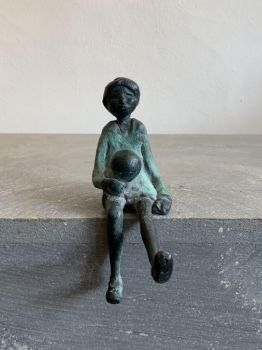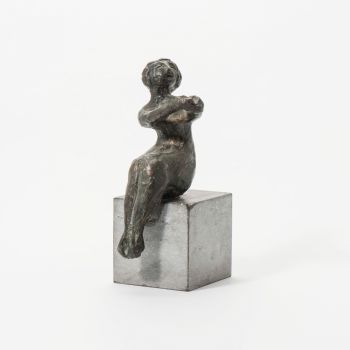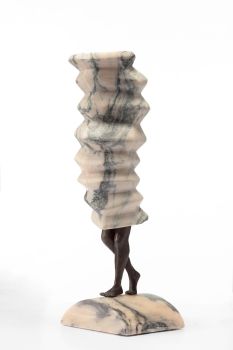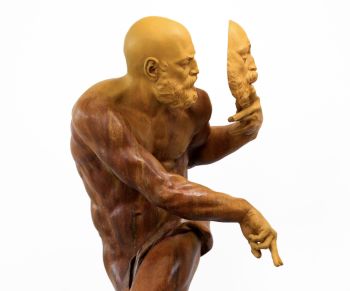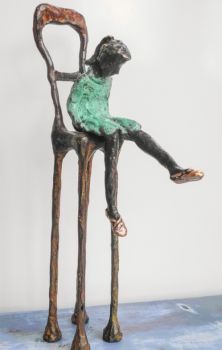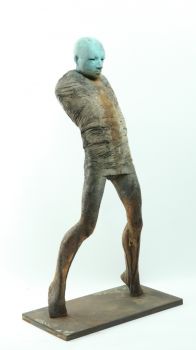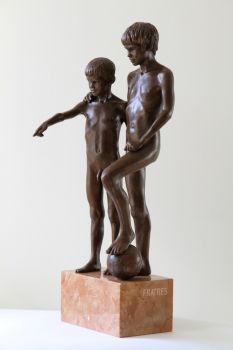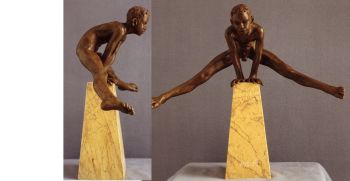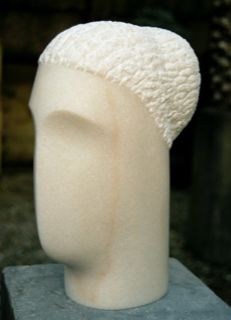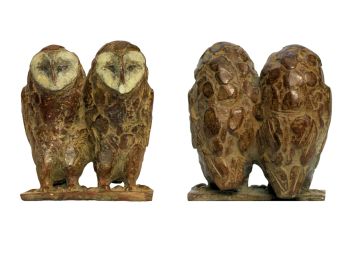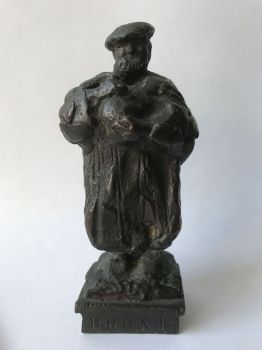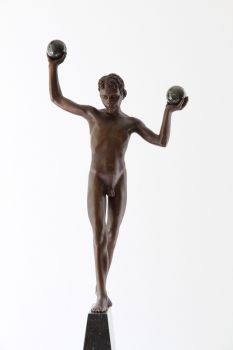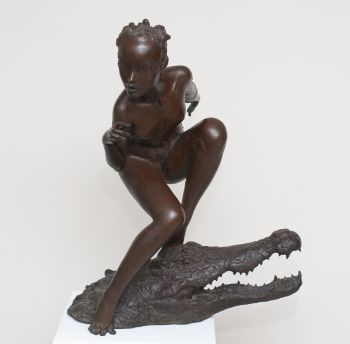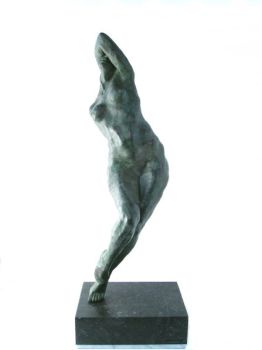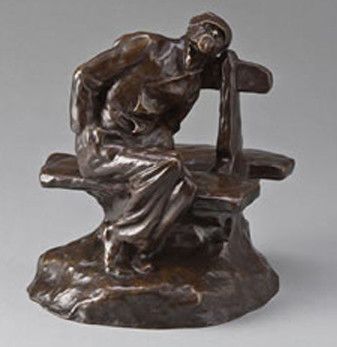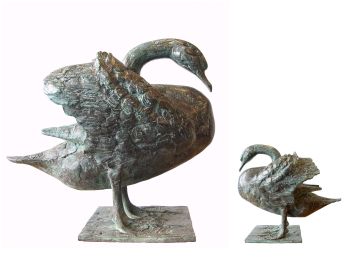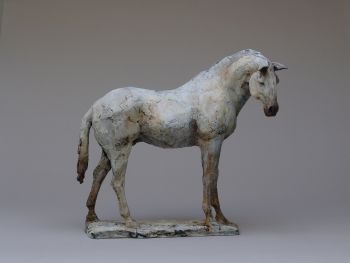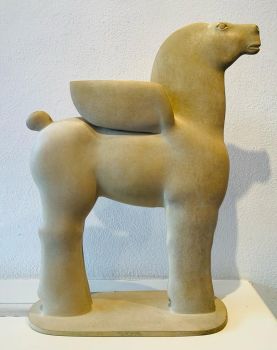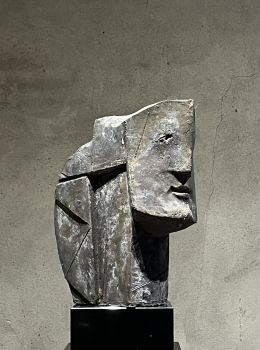French Revolutionary Skeleton Clock with Dual Time Display 1793
Unbekannter Künstler
MarmorSteinBronzeGoldMetallWeißer MarmorEmailleVergoldet
49 ⨯ 27 ⨯ 17 cm
Derzeit nicht über Gallerease verfügbar
- Über KunstwerkA skeleton clock (pendule squelette) with 7 dials and 15 indications, signed: “Baudin”. The upper dial indicates the hour of the day in decimal time (10 hours per natural day). The large dial indicates duodecimal (conventional) time and two extra hands that respectively indicate the date in the Gregorian and the Republican calender. The lower central dial shows the phases of the moon calendar (Quantième De Lune) and the days in the moon calendar (29.5 days)
Beneath the three central dials, there are four more dials that respectively indicate:
Upper left: Zodiac with the respective constellations
Lower left: the outer ring indicates the day of the Republican décade, the inner ring indicates the day of the Gregorian week and its corresponding planet.
Upper right: the months and seasons of the Republican calender
Lower right: the months of the Gregorian calender.
The clockwork has a going train with pin wheel escapement and central seconds indication. The half-second grid pendulum has spring suspension. To level the mechanism there are set screws in each of the four legs.
The striking train for the quarter hours is located in the left leg and strikes on two bells (b1 & b2) In the right leg there is a striking train for the hours (b3).
The quarter hour striking train strikes once at 15 minutes (b1), twice at 30 minutes (b1-b2) and three times at 45 minutes (b1-b2-b1). At the hour it strikes 4 times (b1-b2-b1-b2) and subsequently the hour at b3
The left striking train drives the hands of the two lower left dials, the right striking train drives the hands of the right dials. The left winding mechanism is wound clockwise, the right mechanism is wound counter clockwise. The windlasses of the respective springs are hidden behind the blue enamelled cover plates. The date and moondate are driven by the going train.
The Revolutionary calender
The calender had 12 months of equally 30 days. The months were divided into three periods or décades of ten days. Every year starts on the autumnal equinox (when the sun is exactly of the equator). The days left to make a full year after the twelve months, were called jours supplémentaires or sanculotides. These were the day of virtue, the day of genius, the day of labour, the day of opinion, and the day of recompense. In leap years (les années sextiles) the day of the revolution was added to this range. The period of four years that ended with the day of the revolution was called a Franciade.
The poet Fabré d’Églantine was commissioned to devise new names for the months and days. months of the fall; vendémiaire, brûmaire, frimaire; months of winter; nivôse, pluviôse, nivôse; months of spring; germinal, floreal, priairial; months of summer; messidor, thermidor, fructidor.
The days of the décades were called: primedi, duodi, tridi, quartidi, quintidi, sextidi, septidi, octidi, nonidi, and décadi. Every day of the year also got its own name to replace the Catholic saints days. It was decided that days were given names of fruits, vegetables, animals, tools etcetera. The quintidis should get the name of an animal, the décadis were to be given the name of agricultural implements. - Über Künstler
Es kann vorkommen, dass ein Künstler oder Hersteller unbekannt ist.
Bei einigen Werken ist nicht zu bestimmen, von wem sie hergestellt wurden, oder sie wurden von (einer Gruppe von) Handwerkern hergestellt. Beispiele sind Statuen aus der Antike, Möbel, Spiegel oder Signaturen, die nicht klar oder lesbar sind, aber auch einige Werke sind überhaupt nicht signiert.
Außerdem finden Sie folgende Beschreibung:
•"Zugeschrieben …." Ihrer Meinung nach wohl zumindest teilweise ein Werk des Künstlers
•„Atelier von ….“ oder „Werkstatt von“ Ihrer Meinung nach eine Arbeit, die im Atelier oder in der Werkstatt des Künstlers, möglicherweise unter seiner Aufsicht, ausgeführt wurde
•„Kreis von ….“ Ihrer Meinung nach ein Werk aus der Zeit des Künstlers, das seinen Einfluss zeigt, eng mit dem Künstler verbunden, aber nicht unbedingt sein Schüler
•"Art von …." oder „Anhänger von ….“ Ihrer Meinung nach eine Arbeit, die im Stil des Künstlers ausgeführt wurde, aber nicht unbedingt von einem Schüler; kann zeitgenössisch oder fast zeitgenössisch sein
•„Art von ….“ Ihrer Meinung nach ein Werk im Stil des Künstlers, aber späteren Datums
•"Nach …." Ihrer Meinung nach eine Kopie (jegliches Datums) eines Werks des Künstlers
• „Unterzeichnet …“, „Datiert …“. oder „Beschriftet“ Ihrer Meinung nach wurde das Werk vom Künstler signiert/datiert/beschriftet. Das Hinzufügen eines Fragezeichens weist auf einen Zweifel hin
• „Mit Unterschrift …“, „Mit Datum …“, „Mit Aufschrift ….“ oder „Trägt Unterschrift/Datum/Beschriftung“ ihrer Meinung nach die Unterschrift/Datum/Beschriftung von jemand anderem als dem Künstler hinzugefügt wurde
Artwork details
Related artworks
Unbekannter Künstler
Ein seltenes Filigrana, ein Retortoli-Becher1550 - 1600
Preis auf AnfragePeter Korf de Gidts - Antiquairs
1 - 4 / 12Johannes Schiotling
Ein Paar holländische silberne Kerzenhalter1784
Preis auf AnfrageJacob J. Roosjen SRI
1 - 4 / 7 Kuratiert von
Kuratiert vonDanny Bree
1 - 4 / 24- 1 - 4 / 7
- 1 - 4 / 24

